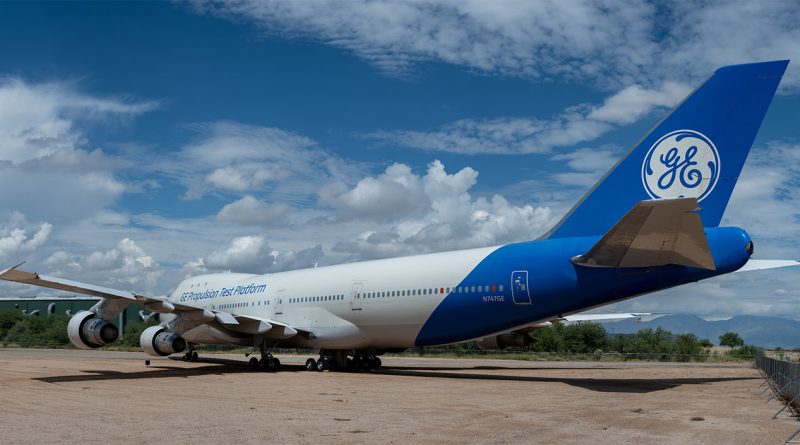GE Aerospace backs BETA Technologies to drive hybrid electric flight
Subscribe to our free newsletter today to keep up to date with the latest manufacturing news.
GE Aerospace is making a $300 million bet on the future of hybrid electric flight through a new partnership with Vermont-based BETA Technologies. The strategic investment will support the joint development of a hybrid electric turbogenerator system, targeting applications in both civil and defense aviation. The move positions the two companies to help define the evolving sector of Advanced Air Mobility, as aviation leaders seek propulsion solutions that blend electric performance with the reliability of turbine systems.
The collaboration merges GE Aerospace’s experience in turbine engines and power systems with BETA’s high-performance electric propulsion capabilities. Together, they intend to develop a scalable propulsion platform that enables longer-range, faster, and more efficient aircraft in the emerging AAM segment. Subject to regulatory approval, the agreement will also grant GE Aerospace a board seat at BETA, deepening its involvement in the young company’s strategic roadmap.
GE’s gambit in hybrid electric aviation
The deal is one of the largest known investments into hybrid propulsion development in the AAM market to date. GE Aerospace will leverage its existing CT7 and T700 engine platforms, widely used in military and commercial helicopters, to support the development of a turbogenerator optimized for use with electric powertrains. This hybrid unit will serve as a critical enabler for electric Vertical Takeoff and Landing aircraft, or eVTOLs, that require energy-dense propulsion for extended missions beyond the range of current battery technology.
BETA brings to the partnership a record of engineering and test milestones, including its ALIA aircraft platform. The company has demonstrated reliable electric flight in both vertical and fixed-wing configurations and has invested in a national network of compatible charging infrastructure. With more than 50 sites already online, BETA is positioning itself as a vertically integrated player in electric aviation.
For GE Aerospace, the investment marks a continuation of its research into electric propulsion. The company conducted one of the first megawatt-class hybrid electric tests in simulated altitude conditions as early as 2022, demonstrating the feasibility of such systems at cruising altitudes for single-aisle aircraft.
Market tailwinds for hybrid aircraft
The timing of the partnership is strategic. The hybrid electric aircraft market is projected to grow substantially over the next decade. Recent forecasts place the market size at over $12 billion by 2030, up from less than $3 billion in 2023. Some long-term estimates suggest a potential market value above $450 billion by 2050, as more commercial and defense applications shift toward hybrid architectures.
Environmental pressures, fuel cost volatility, and regulatory incentives are accelerating the adoption of hybrid propulsion technologies. At the same time, advances in power electronics, lightweight materials, and energy storage are making previously experimental concepts commercially viable. Hybrid electric systems offer an intermediary path toward full electrification by balancing battery limitations with the range and reliability of traditional engines.
Advanced Air Mobility is seen as one of the earliest testbeds for these technologies. It includes not only eVTOLs but also small fixed-wing aircraft designed for urban and regional connectivity. The need for quiet, efficient, and lower-emission aircraft in densely populated regions is pushing manufacturers to explore hybrid designs that can operate with less infrastructure dependency.
Manufacturing implications and industrial shift
This joint initiative also reflects a broader shift in aerospace manufacturing. Hybrid propulsion systems are driving the convergence of mechanical and electrical engineering disciplines, requiring new supply chain configurations and factory capabilities. GE Aerospace’s involvement points to the need for legacy manufacturers to adapt their production environments to accommodate integrated electric systems alongside turbine components.
Developing a turbogenerator that can support commercial-scale aircraft requires extensive validation and certification. That includes high-voltage system testing, electromagnetic compatibility assessments, and robust thermal management. For suppliers, this will demand new capabilities in materials science, high-speed machining, and battery module integration.
The emergence of hybrid aviation is also reshaping workforce needs. Engineering teams must now integrate thermal, structural, and electrical systems into unified platforms, requiring more cross-disciplinary training. Aerospace companies are increasingly recruiting from sectors such as automotive EV development and power electronics.
Broader ripple effects in aerospace
The GE and BETA alliance is expected to influence other players in the aerospace ecosystem. With one of the world’s largest turbine engine manufacturers entering the hybrid race with a hands-on partnership, the pressure increases on other engine makers to accelerate their own electric strategies. That may trigger further investment into hybrid architectures from competing OEMs and propulsion startups.
In addition to civil applications, the defense sector is monitoring hybrid propulsion closely. Applications such as surveillance drones, logistics aircraft, and short-hop military transports could benefit from the range and acoustic advantages of hybrid systems. Governments are expected to play a role in funding demonstration projects and defining certification pathways, especially for dual-use platforms.
Smaller manufacturers and suppliers may also see opportunities to specialize in components tailored to hybrid applications. These include high-efficiency inverters, lightweight enclosures, and thermal management systems that are essential for high-voltage flight.
Sources
